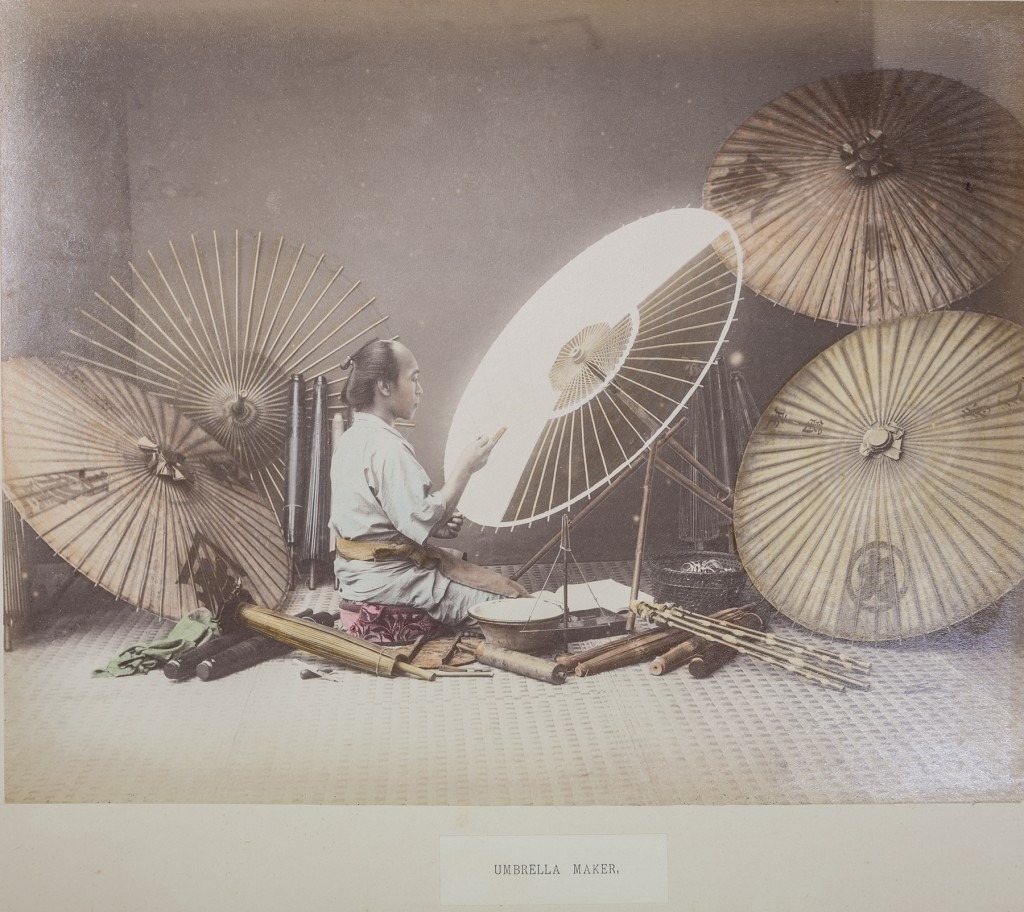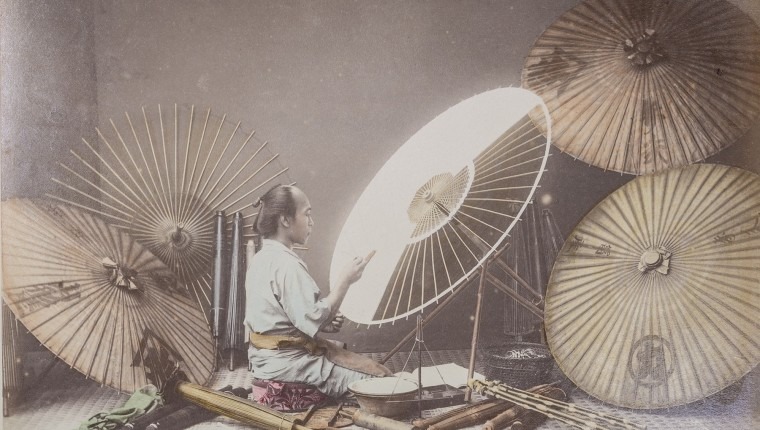The Evocative Details in
Early Japanese Photography
Through July 23
Museum of Fine Arts
Details here
As I walked upstairs, the echo of a busy Saturday at the MFA faded away. I am grateful the Shashin exhibition is away from the constant foot traffic of the other shows. With lower ceilings and zen-green walls, you can quietly absorb the grace and beauty of these elegant photographs.
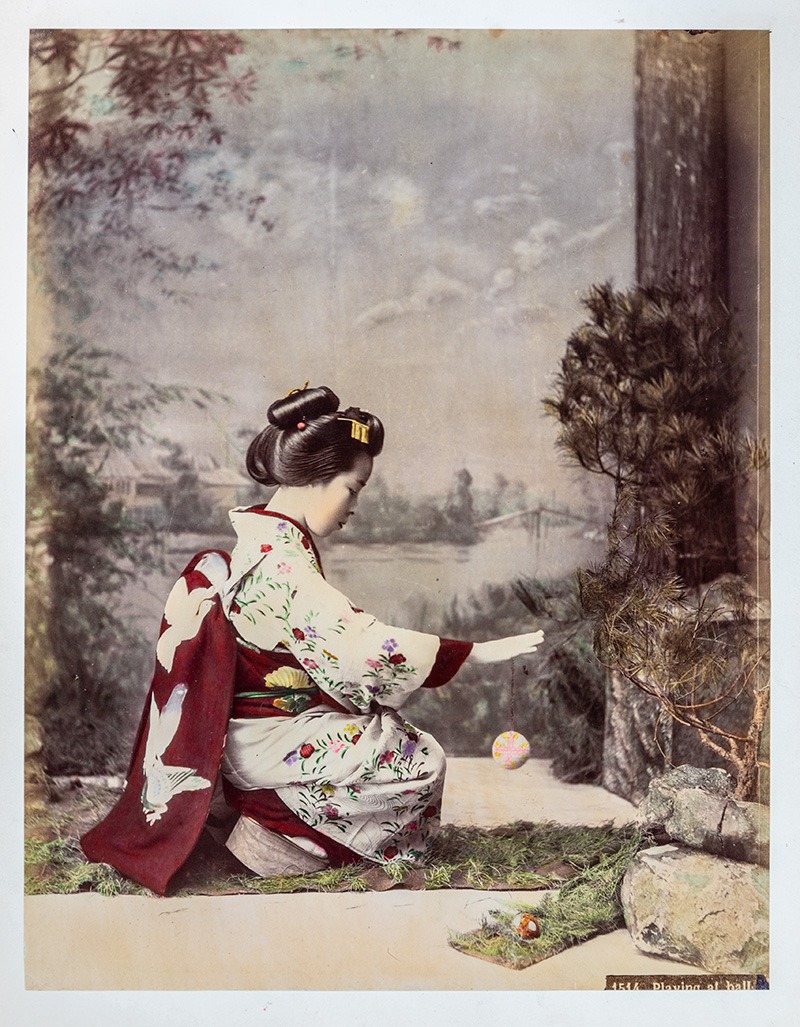
“Shashin” is Japanese for photograph. This specific era, the Meiji era, 1870-1900, is a time when this fairly new invention of photography was going through many evolutions – with practitioners from all over the world improving the craft rapidly. But Japan, known for a calmer, more thoughtful approach to life, did not awaken to photography till 20-plus years after the artform’s birth in 1839.
The images here are not massive prints that often dominate museum shows and they are very detailed with a sharpness you only get with a large format camera.
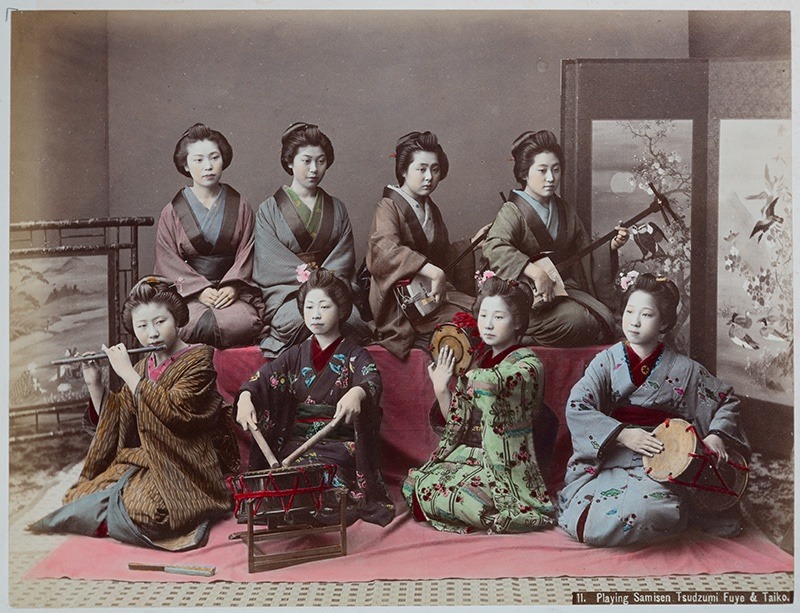
I love people watching in galleries. They start a few feet back, then step closer, then closer and almost leave a nose print on the glass – studying the delicate details and admiring the precision of the hand-coloring.
Notice the nuances – the footwear and how men stand with feet apart, how the women do not look into the lens but the men do.
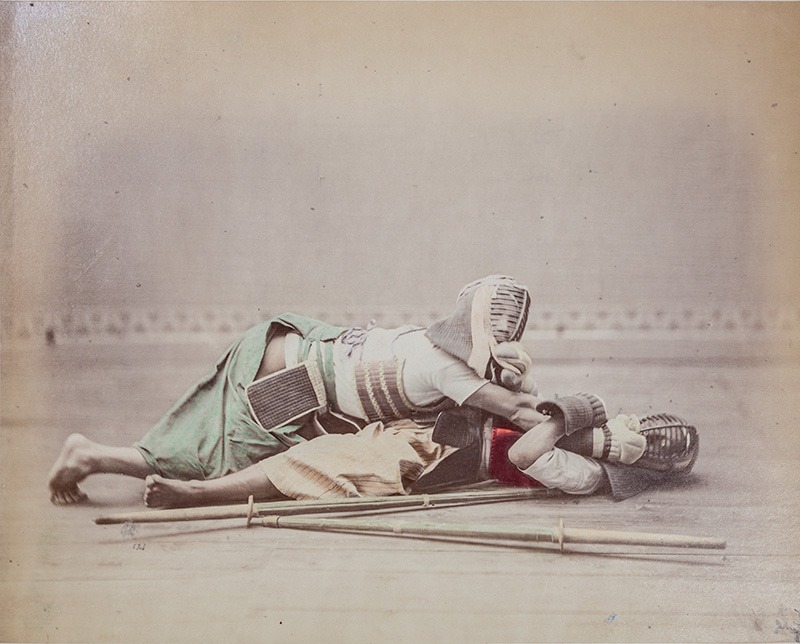
The photographers are not the ones who hand-color – a different artist would spend hours working on this final part. Only select areas have tint, bringing attention to silk garments and faces. The color does not scream at you but invites you find it.
In a small gallery space, these artists bring you meticulous studio vignettes, street photos that are not cluttered but highlight daily life, botanical still lifes, vanished landscapes and petite ambrotype portraits in handmade, wood presentation boxes.
I saw several people walk through in two minutes, and one person said “oh these are just photos,” and left. What? My heart broken a little hearing that.
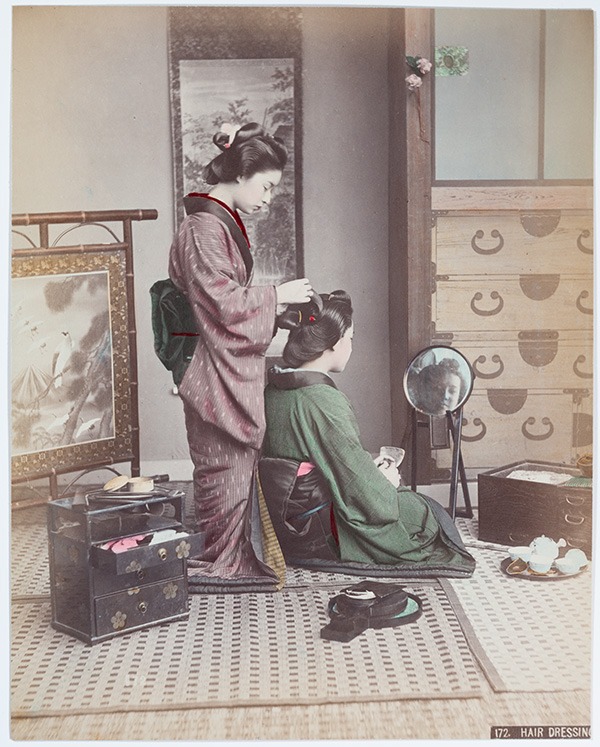
Within this collection, you learn about Japanese culture, the early diverse methods of photography, and how artists collaborate. It is hard to comprehend that many of these refined photos were for tourists to remember their adventures in Japan, given all the plastic junk that we sell to tourists in Florida!

This gallery alone is worth the price of admission, but only if you really take time to be with the photographs. Dwell in them and think about history, the difficulty of photography in this era and the artistry of the hand-coloring.
Dwell in them and try to imagine being there.
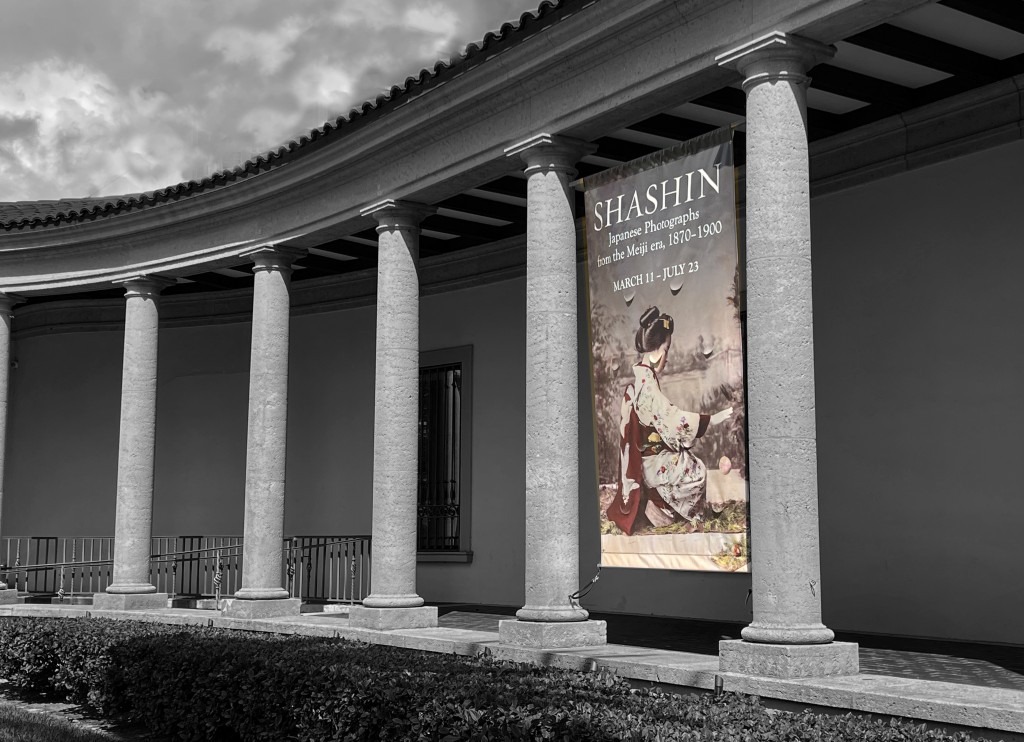
. . .
Beth Reynolds is a photographer, curator, mentor and has Hokusai’s famous wave tattooed on her arm. She teaches hand-coloring photographs at the Morean Arts Center.
